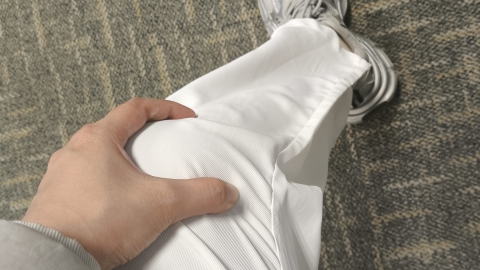What causes pain in the groin area of the thigh during jump rope exercise?
Generally, pain in the upper thigh or groin area during jump rope exercise may be caused by insufficient warm-up leading to muscle strain, improper movements causing excessive friction, inguinal lymphadenitis, hip synovitis, or avascular necrosis of the femoral head. It is recommended to seek medical attention promptly, identify the underlying cause, and receive appropriate treatment under a doctor's guidance. Detailed analysis is as follows:

1. Muscle strain due to inadequate warm-up: Failing to warm up properly before jumping rope leaves the muscles in the groin area tense, making them prone to strain and pain when sudden force is applied. Immediately stop jumping rope, apply cold compresses during the acute phase to reduce swelling, and switch to heat compresses after 48 hours to promote recovery. Avoid strenuous activities during the recovery period.
2. Excessive friction due to improper technique: Excessively wide leg movements or incorrect posture during jump rope can cause repeated friction between the skin and muscles in the groin, resulting in discomfort or pain. Adjust your jumping technique by reducing the amplitude of leg movements and wearing loose, breathable clothing to minimize friction-related injuries.
3. Inguinal lymphadenitis: Bacterial infection can cause inflammation of the lymph nodes in the groin. Jumping rope may stretch and irritate the inflamed area, worsening the pain, possibly accompanied by swollen lymph nodes. Patients should follow medical advice to take antibiotics such as Amoxicillin Capsules, Cefixime Dispersible Tablets, or Roxithromycin Capsules to treat the infection.
4. Hip synovitis: Inflammation of the synovial membrane in the hip joint caused by irritation can lead to groin pain during jump rope due to increased joint stress. This condition is often accompanied by limited joint mobility. Patients may take pain-relieving medications such as Ibuprofen Sustained-Release Capsules, Celecoxib Capsules, or Etoricoxib Tablets as directed by a physician.
5. Avascular necrosis of the femoral head: When blood supply to the femoral head is impaired, it can lead to bone death. During jump rope, uneven stress on the femoral head may trigger groin pain, which may progress to difficulty walking in later stages. In severe cases, total hip arthroplasty (hip replacement surgery) may be required to replace the damaged femoral head, restore hip function, and relieve pain.
Before regular jump rope sessions, ensure adequate warm-up, choose appropriate venues and equipment, and control exercise intensity and duration. If groin pain occurs, stop exercising immediately and rest. Gradually resume activity only after full recovery to prevent symptom aggravation.




